Search Images
Browse Content (p. 1317)
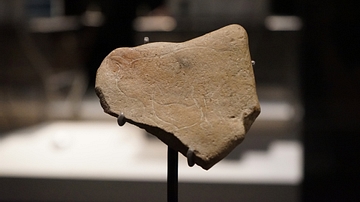
Image
Ice Age Drawing of a Bison
Ice Age drawing of a bison, on limestone, about 13,000-14,000 years old. Found in Montastruc, France. Over, 100,000 years ago the first fully modern humans in southern Africa began to create works of art. These people then migrated to...
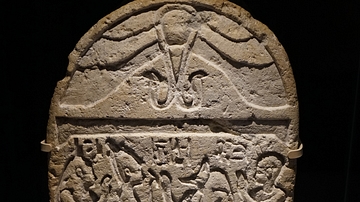
Image
Funerary Stela
Limestone funerary stela, 100 BCE-100 CE. Egypt. This funerary stela commemorates the death of a man named Didymos. It was made during the Ptolemaic period or soon after the Roman conquest. This image was taken at the National Museum...
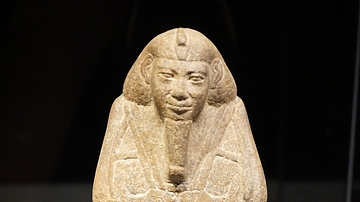
Image
Shabti of Taharqo
Shabti of Taharqo. Granite, about 664 BCE. Nuri, Sudan. The Kingdom of Kush was an ancient power in what is now Sudan. Between 747 and 656 BCE there was a power shift in Egypt and Kush and the Kushites ruled both. The Kushites adopted...

Image
Australian Aboriginal Basket
Pandanus fibre basket. Collected 1911-1912 CE. Port Essing, Arnhem Land, Australia. Baskets like this conical shaped one have been identified in Arnhem Land rock art dating back more than 20,000 years. Baskets were made to carry a variety...
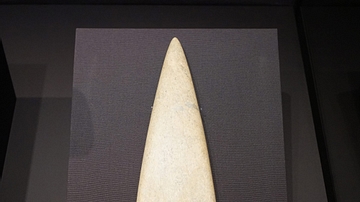
Image
Stone Age Jade Axe
Jade, 5000-3600 BCE. Biebrich, Germany. This axe is made of European jade mined in prehistoric quarries in the Italian Alps. It appears to be an object of beauty rather than function. It would have taken several days to polish this jade...

Image
Lunula
Gold, 2400-2000 BCE. Mangerton, Kerry, Ireland. Though we assume this gold lunula (little moon in Latin) was a piece of jewellery, little is known about who would have worn it. Lunulae were made in Ireland and Britain during the Bronze...
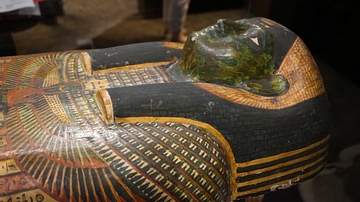
Image
Shepenmehyt's Coffin
This coffin was made for a woman named Shepenmehyt, she is depicted on the coffin lid with her face painted green, possibly in symbolic representation of the god Osiris. This image was taken at the National Museum of Australia in the...
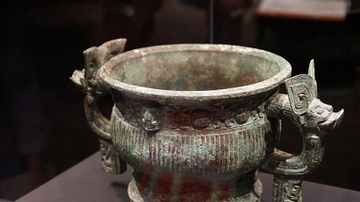
Image
Western Zhou Ritual Vessel
Bronze ritual vessel, Western Zhou Dynasty, 1100-1000 BCE. Henan Province, China. The ancient Chinese tradition of preparing ceremonial meals for ancestors dates back to the Shang dynasty (1500-1050 BCE). An inscription inside this bowl...
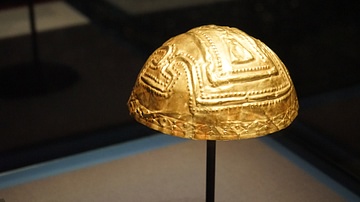
Image
Colombian Gold Helmet
Gold alloy (tumbaga), 500 BCE - 700 BCE. Colombia. Gold was an important material in ancient Colombia. It had a symbolic association with the creative energy of the Sun. This helmet would not have been used in battle but instead would...
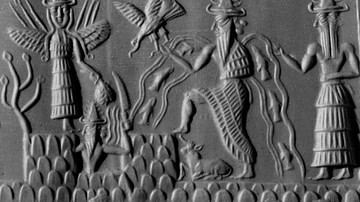
Image
Adda Seal
The Adda Seal, depicting the Sumerian god Enki with two rivers pouring from his shoulders. The two-faced figure is his vizier Usimu. On the left is the sun god Utu-Shamash. 2300 BCE.
The British Museum, London.